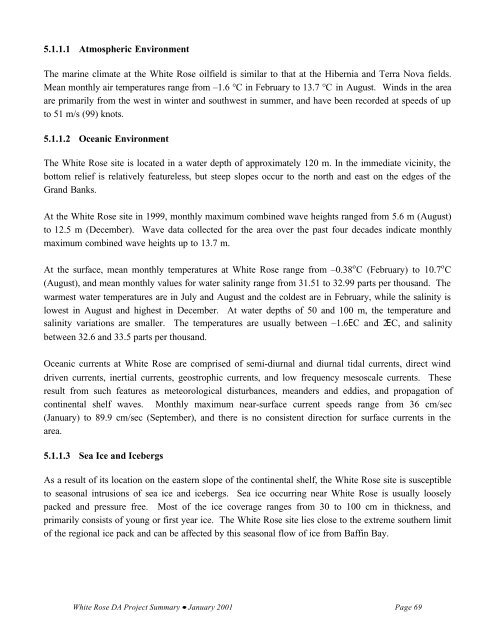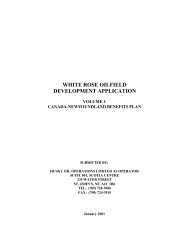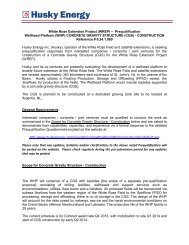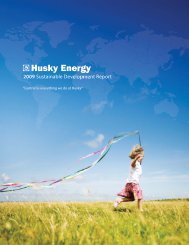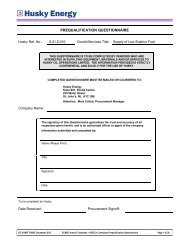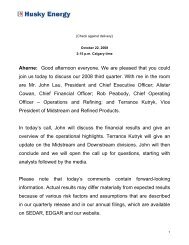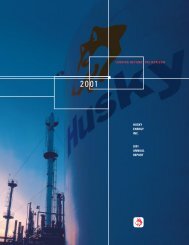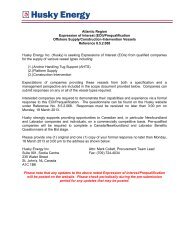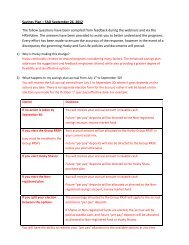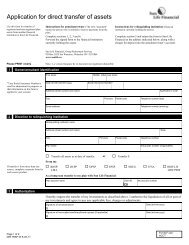white rose oilfield development application - Husky Energy
white rose oilfield development application - Husky Energy
white rose oilfield development application - Husky Energy
- No tags were found...
You also want an ePaper? Increase the reach of your titles
YUMPU automatically turns print PDFs into web optimized ePapers that Google loves.
5.1.1.1 Atmospheric EnvironmentThe marine climate at the White Rose <strong>oilfield</strong> is similar to that at the Hibernia and Terra Nova fields.Mean monthly air temperatures range from –1.6 °C in February to 13.7 °C in August. Winds in the areaare primarily from the west in winter and southwest in summer, and have been recorded at speeds of upto 51 m/s (99) knots.5.1.1.2 Oceanic EnvironmentThe White Rose site is located in a water depth of approximately 120 m. In the immediate vicinity, thebottom relief is relatively featureless, but steep slopes occur to the north and east on the edges of theGrand Banks.At the White Rose site in 1999, monthly maximum combined wave heights ranged from 5.6 m (August)to 12.5 m (December). Wave data collected for the area over the past four decades indicate monthlymaximum combined wave heights up to 13.7 m.At the surface, mean monthly temperatures at White Rose range from –0.38 o C (February) to 10.7 o C(August), and mean monthly values for water salinity range from 31.51 to 32.99 parts per thousand. Thewarmest water temperatures are in July and August and the coldest are in February, while the salinity islowest in August and highest in December. At water depths of 50 and 100 m, the temperature andsalinity variations are smaller. The temperatures are usually between –1.6EC and 2EC, and salinitybetween 32.6 and 33.5 parts per thousand.Oceanic currents at White Rose are comprised of semi-diurnal and diurnal tidal currents, direct winddriven currents, inertial currents, geostrophic currents, and low frequency mesoscale currents. Theseresult from such features as meteorological disturbances, meanders and eddies, and propagation ofcontinental shelf waves. Monthly maximum near-surface current speeds range from 36 cm/sec(January) to 89.9 cm/sec (September), and there is no consistent direction for surface currents in thearea.5.1.1.3 Sea Ice and IcebergsAs a result of its location on the eastern slope of the continental shelf, the White Rose site is susceptibleto seasonal intrusions of sea ice and icebergs. Sea ice occurring near White Rose is usually looselypacked and pressure free. Most of the ice coverage ranges from 30 to 100 cm in thickness, andprimarily consists of young or first year ice. The White Rose site lies close to the extreme southern limitof the regional ice pack and can be affected by this seasonal flow of ice from Baffin Bay.White Rose DA Project Summary • January 2001 Page 69


